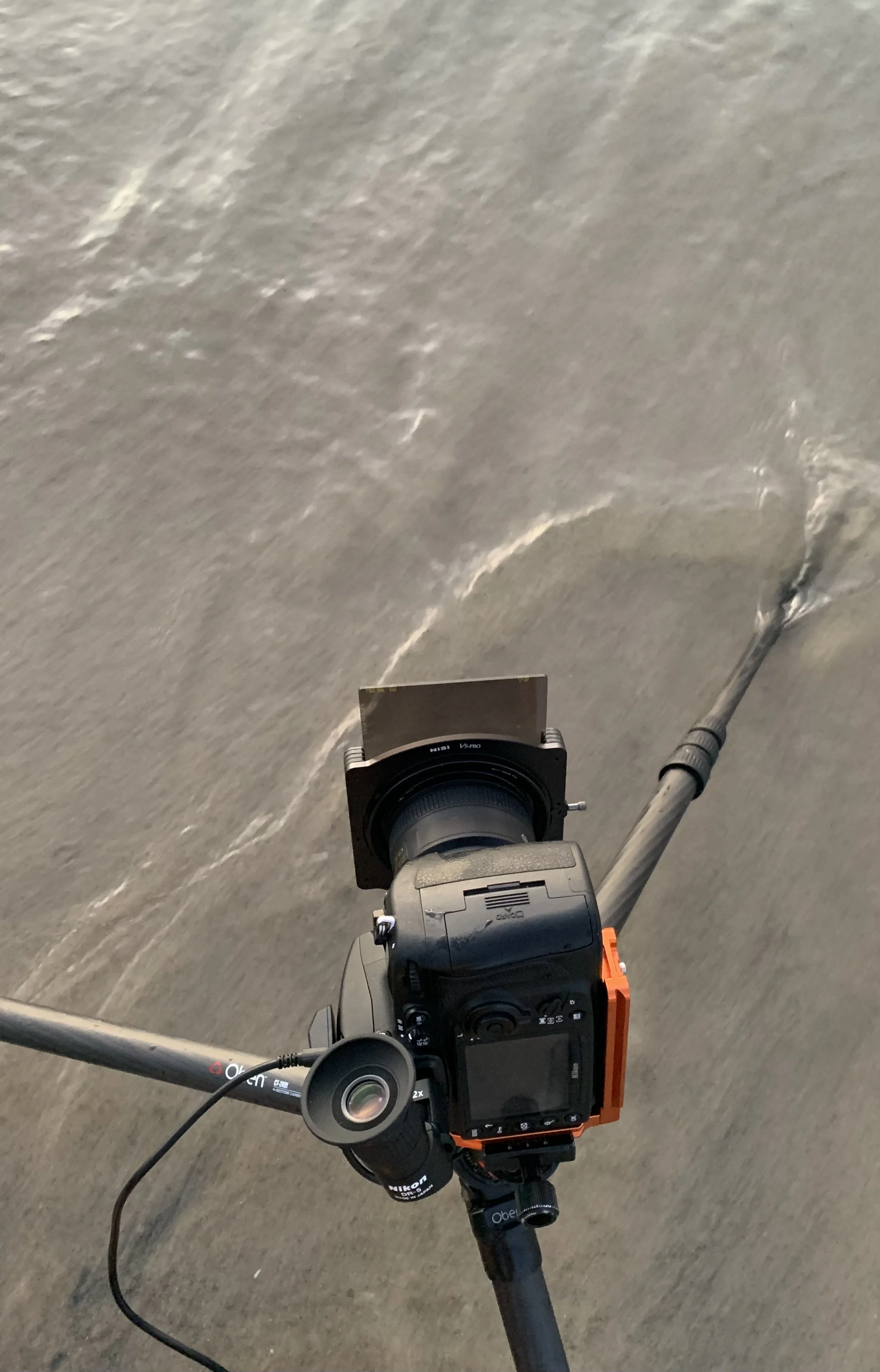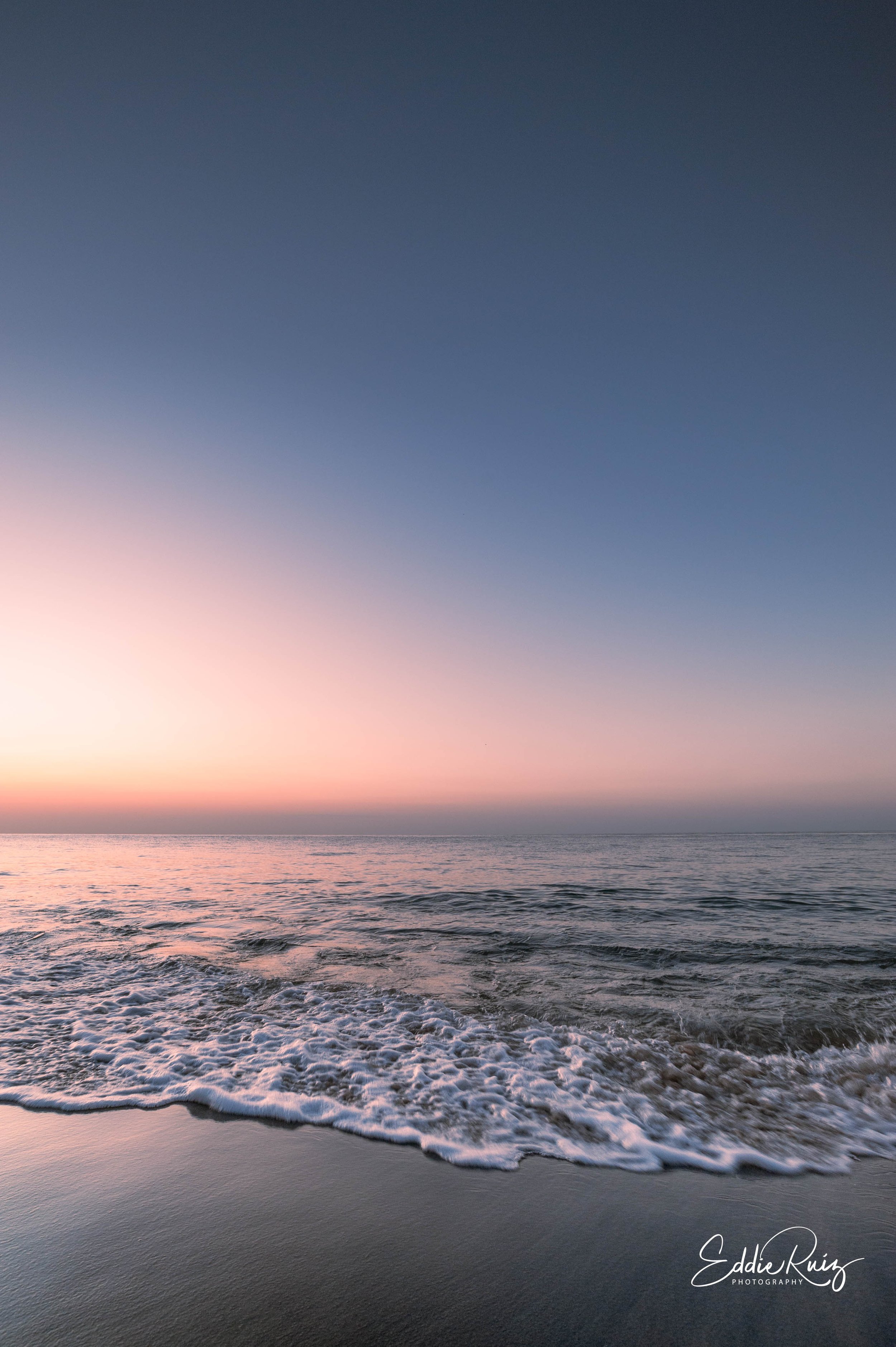Seascapes with the Nikon D700
A couple of weeks ago I got the Nikon DR5 right angle viewfinder, a great piece of gear to ease low angle shots with my dear Nikon D700. And to test the limits of this setup, I thought what better place to put it into practice that shooting sunrises at the beach on a recent family vacation.
Good thing about sunrise photography is that it happens when your family is sleeping :-)
Sunrises in Panama during summer season starts around 6:30AM. These past few days I tried to arrive early at the beach around 5:45AM when everything is pitch dark, and you can see but a slimmer of light on the horizon, and with clear skies, the view is basically spiritual. A perfect way to connect with the world around you.
So I was pumped trying a new setup on my Nikon D700: the ultra wide Nikkor 18-35mm 3.5-4.5g lens, my tripod, the right angle viewfinder, a GPS locator, my cable release, a polarizer and ND filter. This part of the photography process I love, the technical process of taking a picture.
I am not an expert on seascapes, so it was all trial and error. It was not easy. The D700 cannot find focus in low light, thankfully the right angle viewfinder is bright and big, and including a 2x magnification swivel, so images look much larger and clearer, all of which helped to manually focus the lens.
I couldn't decide whether to compose with the camera close to the ground, or high from the ground, but it was after my second day shooting that it felt getting closer to the sand and deeper into where the waves break ashore as the right place to be. I realized I had to wait fo the tripod legs to sink until they get a firm grip on the sand, after that, composing felt easier.
In my mind I wanted to catch the sunrise and freeze the foam from the waves just as they hit the sand, but that was not easy, I had to increase ISO to 1600 barely to achieve a speed of 1/15 seconds, not enough at all. I had to wait to get more light. And also, using a ultrawide angle lens meant the sun will appear very small in the composition, not exactly what I intended. Obviously, I don't do this very often, but experience has already taught me in situations like these, try to make the best of it, as difficult as it is.
I had the opportunity to enjoy three sunrises, each with their challenges, for which I made a list of things I learned:
Even though the right angle viewfinder was great help, depending on manually focusing in low light made me self aware of my insecurities. I was never sure the shots were in focus.
Reacting to impromptu shots was not easy using the Nikon DR5. Next time I should bring another camera for candid opportunity shots (the coming and going of launch boats was an unexpected great surprise).
I loved the GPS dongle. It feels great getting accurate geotag information in every photo.
Cloudy mornings were a drag. It took me a while to break away from my bad attitude in those moments, and couldn't conform to make proper shots. That was disappointing, and I have to make an effort accepting challenging weather and find interesting compositions.
I couldn't get the shot I had in mind. I think my mind was to fixated on getting close. I should have brought a telephoto lens and hoping with a low to the ground composition and using compression, I would probably have gotten the shot I had in mind. In other words, I should be aware of thinking outside the box.
I should have scouted the area the day before the first sunrise, just to explore spots where I could have found better and more interesting compositions.
The Nikkor 18-35mm g lens produces distortions at 18mm, despite Lightroom corrections. That's inevitable, and I cannot find comfort accepting slightly curved horizons. Nevertheless, other lenses such as the Nikkor 16-35mm f4 I read does the same thing. So it appears to be an ultra wide lens thing.
And I should have trusted more the the ND filter, because lifting the shadows from the dark areas of the picture, using the old sensor of the D700, produces greenish nasty noise. I have to be much aware of the technical restrictions of this camera.
Having said and learned all that, my trials and efforts were compensated in the editing room. The RAW files from the D700 can store enough photon data to produce amazing pastel like colors. I love it. I love this camera.
Panama Sunrise














